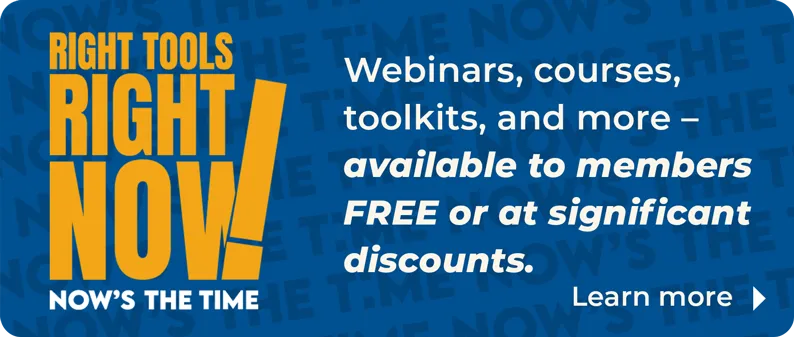by Masha Zager
It shouldn’t be surprising that government affairs directors love social media. After all, their jobs involve persuading other people to act. From LinkedIn to Facebook to Twitter, social media and other communication technologies are amplifying GADs’ voices, helping them reach more REALTORS®, elected officials, and even members of the general public.
Although GADs agree that new technology tools don’t replace face-to-face meetings or phone calls—and are certainly no substitute for a well-honed, coherent message—social media really shines when it comes to winning political battles.
For instance, the Florida Association of REALTORS® used social media to help defeat a proposed state constitutional amendment that would have put cumbersome restrictions on planning and zoning changes. “We want to use social media not as a billboard, but as an opportunity to have discussions,” says Lisa Walker, director of communications and public affairs at the Florida Association of REALTORS®. “We used Linked-In, Facebook, Twitter, and blogs to keep putting our position out. That enabled us to educate not just our members, but the consumers who followed us in the social media space.”
When it comes to alerting membership to advocacy campaigns, Brian Bernardoni, senior director of government affairs and public policy at the Chicago Association of REALTORS®, favors Twitter. “It works with the speed of REALTORS®,” he says. With some association members re-tweeting the alerts to as many as 7,000 Twitter followers, word can get out very fast.
Call to action
Convio, the call-to-action system supplied by NAR, was used in Atlanta to organize a campaign against a bill that would have mandated expensive retrofits of nearly all the city’s commercial buildings. Over the course of a weekend, the campaign generated 1,200 e-mails to members of the Atlanta city council, according to Robert Broome, governmental affairs director for the Atlanta Commercial Board of REALTORS®. When the legislation finally came up for a vote, not a single council member voted for it.
However, generating e-mails with call-to-action software is useful only if legislators actually read their e-mail. “Sending a bunch of aldermen e-mails isn’t as effective as faxes and phone calls. There’s no such thing as one-size-fits-all when you talk about political communications. If you know the best way to get to Senator Smith is a phone call because he picks up his own phone, then do it,” Bernardoni advises.
This year, the Texas Association of REALTORS® used an in-house system, whose targeting capabilities are similar to those of Convio, to bring 2,000 members to the state capitol for meetings with legislators. “For every legislator in that building, there is at least one REALTOR® who is his contact person,” explains Brandon Alderete, governmental affairs communi-cations specialist for the Texas Association of REALTORS®. “If we need to get a message to a legislator, we go through those legislative contact teams.”
Some associations send calls to action to voters in addition to members. John Sebree, vice president of public policy for the Florida association, says the association’s statewide voter database has more e-mail addresses than those of the political parties. This allows the organization to send micro-targeted e-mail or even snail mail on a number of issues, including the constitutional amendment on land-use planning. As an added bonus, the association can even send Spanish-language information to relevant voters, a real boon considering Florida’s large Spanish-speaking population.
Keeping members up-to-date
Getting association members politically involved starts with keeping them up-to-date about the relevant political issues. For this purpose, a daily or weekly e-mail newsletter, usually linking to longer articles on a Web page, is still the fundamental communications tool of choice for the GADs with whom we spoke. Still, many are finding social media useful, be it for funneling members to the information or providing it directly.
At the Florida association, Walker sets up automated Twitter feeds to alert members to items from the e-newsletter. “It’s very effective for us in building relationships with members and having them recognize the Florida REALTOR® brand,” she says, noting that those ongoing relationships make members more willing to respond to calls for action later.
The Florida association also sets up a microsite, using a WordPress platform, for a few months each year to cover the state legislative session in near-real time. Lobbyists upload reports, photos, and video to the site directly from their smart phones. “Members love the live check-in, and they love knowing we’re in the capitol sending them the freshest information that they’re not going to read in the newspaper,” Sebree says.
Broome, an avid tweeter, does his “dead level best to send out three to eight Twitter posts a day.” In addition to keeping members informed about real estate and politics, he live-tweets from city council meetings and other public forums, using Twitter hashtags to expand his readership beyond his followers.
Alderete says that because TAR members have such diverse communication preferences, he tries to use as many channels as possible. Although his tweets primarily cover the state legislative session, he uses a Facebook page to share relevant news, promote association events, highlight political calls for action, and take the pulse of the membership on various subjects. In addition, there is a Facebook group for TREPAC leadership discussions, a texting service that allows members to get political updates by cell phone, and a YouTube channel for “funny stuff.” He also puts QR codes on all printed ma-terials to drive members to the TREPAC Web site.
The Chicago Association of REALTORS® is experimenting with video messaging, using an in-office studio, according Bernardoni. Messages may be posted on YouTube, Facebook, Twitter, and the CAR Web site. “Members will retweet them or embed them on their own pages,” he says.
Gearing up for battle
Many GADs use technology tools to reach legislators directly. In addition to using social media aggregators, such as Flipboard, to gain an in-depth understanding of how elected officials use social media, Bernardoni wields his tweets like a weapon. “Twitter is a great attack tool—if you’ve got the right hashtag, it’s almost like having a sniper. Politicians read it,” he notes.
Broome often sends direct messages to elected officials on Twitter, sometimes linking to press releases, such as one from NAR that called on Congress to approve raising the debt ceiling. However, not all elected officials manage their own accounts. At the local level, Broome considers which council members actually use social media—as opposed to those who relegate the task to a staffer —and makes extra efforts to get information to them this way.
Managing the messaging
With social media proliferating, are GADs’ workloads ballooning out of control? The executives interviewed for this article agreed that the workload was manageable—and well worth the trouble—as long as they used technology to manage all the technology. For example, e-mail newsletters can be set up to auto-populate Twitter feeds. In addition, applications such as HootSuite make it possible to schedule a group of social -media posts for release across several platforms over the course of a day.
So, if you’re embarking into the world of political social media, GADs offer these five tips:
1. Make sure your message is consistent and coherent across all media.
2. Use each medium consistently, so that your audience knows what kinds of communications to expect on each platform and how often to expect updates.
3. Use a consistent look and feel for each communication platform.
4. Remove old news frequently from Web-based platforms.
5. Social media are social, so restrict members-only dialog to closed groups, such as on LinkedIn.








